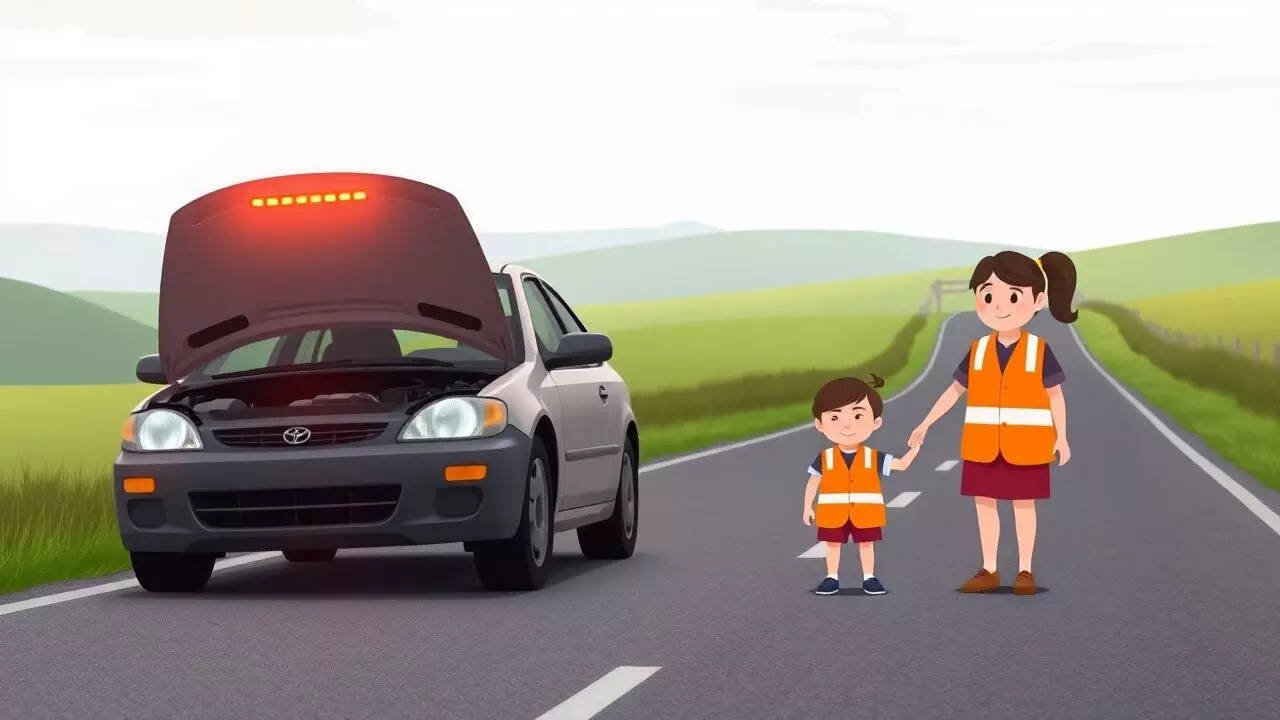How To Stay Safe & Recover Quickly When Your Car Stops On India’s Highways
Experiencing a car breakdown on an Indian highway can be stressful and even dangerous if not handled properly. High-speed traffic, poor lighting, and varying road conditions increase the risk of accidents, especially during night travel or in remote areas. Knowing the correct safety measures and recovery steps can make a significant difference in protecting yourself, your passengers, and your vehicle. This guide explains what to do immediately after a breakdown, how to alert other drivers, and the best ways to arrange recovery or repairs while staying safe on Indian highways .
A car breakdown on an Indian highway can be stressful, but following the right safety and recovery steps ensures minimal risk to life and property. Pulling over safely, staying visible, contacting professional assistance, and avoiding risky self-repairs are key actions for handling such situations. Preparedness, awareness, and calm decision-making can turn a potentially hazardous scenario into a manageable one, keeping both drivers and passengers safe while securing a timely recovery.

Pull Over Safely And Assess The Situation
The first step during any breakdown is to safely move your car off the main carriageway. Use your indicator to signal and gradually steer towards the shoulder, emergency lane, or the widest safe area available. Avoid stopping on blind curves, narrow stretches, or high-speed sections. Once stationary, engage the handbrake and switch on hazard warning lights to alert other motorists. If visibility is low, placing a reflective triangle or warning cones behind the vehicle can further reduce the risk of collisions.Stay Inside Or Outside Based On Road Conditions
Once you have secured the vehicle, assess whether it is safer to stay inside or exit. On busy highways with fast-moving traffic, it is generally safer to remain inside with seatbelts fastened until help arrives. If you need to exit, do so carefully on the side away from traffic. Ensure all passengers, especially children, are kept clear of the road. Wearing high-visibility clothing, if available, can help prevent accidents when outside the vehicle.Contact Roadside Assistance Or Emergency Services
After ensuring safety, the next priority is to arrange assistance. Contact your car insurance provider’s roadside assistance service, authorised dealers, or local towing services. Many highways in India also have patrol vehicles or police helplines that can assist stranded motorists. Provide accurate details about your location, the nature of the breakdown, and the number of passengers in your car to ensure timely help. Keep essential documents such as insurance and vehicle registration handy.Attempt Minor Repairs Only If Safe
Certain minor issues like a flat tyre, empty fuel tank, or loose battery connection can sometimes be addressed safely on the spot. However, avoid attempting repairs that require exiting the vehicle in high-speed traffic or manipulating complex engine components without proper tools or knowledge. Safety should always come first, and it is often better to wait for professional help rather than risk injury.Use Safety Equipment And Stay Visible
Ensure that your car remains visible to other motorists while waiting for assistance. Hazard lights, reflective triangles, cones, and any other safety equipment in your vehicle’s emergency kit are essential. If the breakdown occurs at night, keep your headlights or parking lights on in addition to hazard indicators. Staying visible reduces the risk of secondary accidents and gives you more time to manage the situation calmly.Plan For Recovery And Next Steps
Once professional help arrives, follow their instructions carefully for towing or roadside repairs. If towing is necessary, ensure the car is secured properly and that you remain at a safe distance from traffic. After the vehicle is moved to a safe location, have a qualified mechanic inspect it to prevent further issues. Regular maintenance, timely servicing, and carrying an emergency kit can also reduce the chances of highway breakdowns in the future.A car breakdown on an Indian highway can be stressful, but following the right safety and recovery steps ensures minimal risk to life and property. Pulling over safely, staying visible, contacting professional assistance, and avoiding risky self-repairs are key actions for handling such situations. Preparedness, awareness, and calm decision-making can turn a potentially hazardous scenario into a manageable one, keeping both drivers and passengers safe while securing a timely recovery.
Next Story